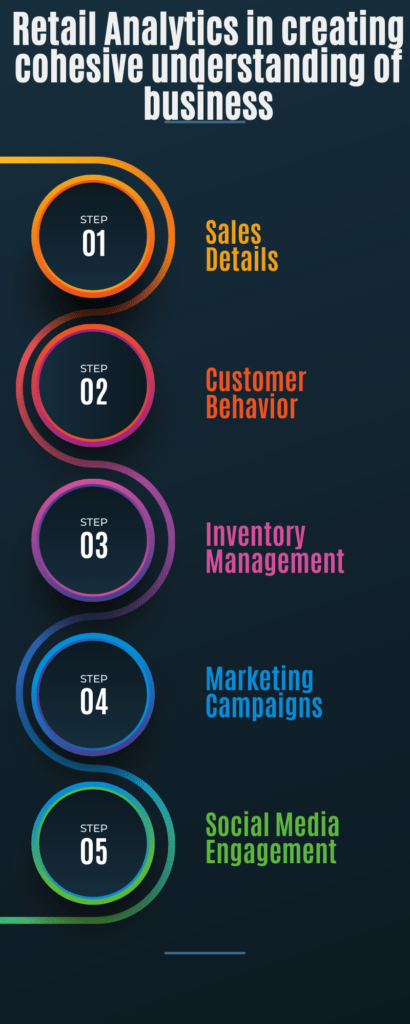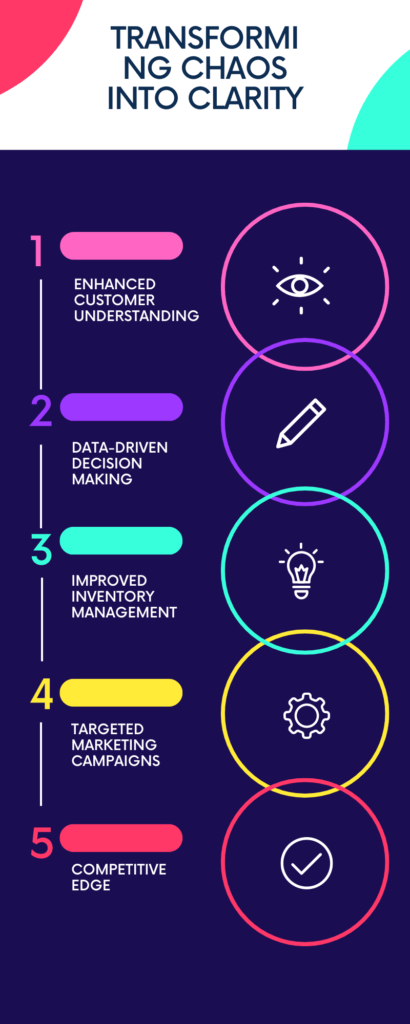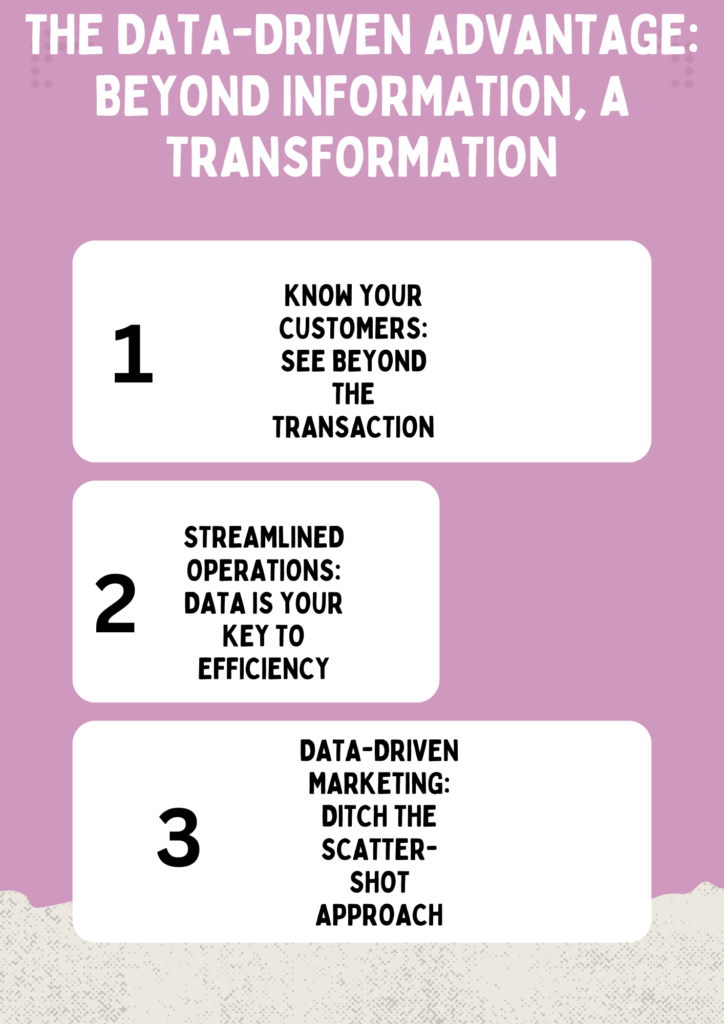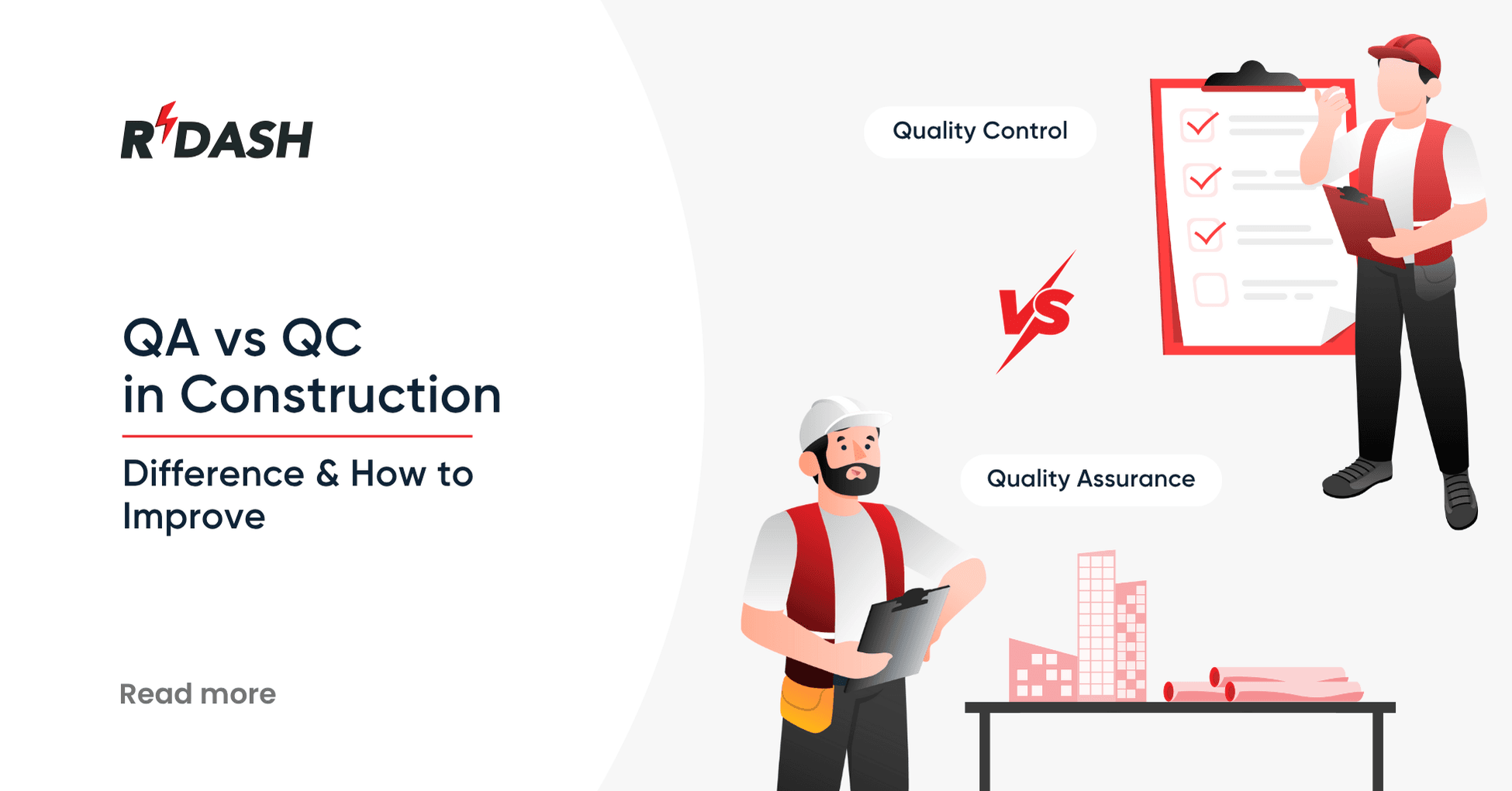Retail analytics is a crucial tool that helps retailers understand their customers, optimize operations, and boost sales in a competitive market. By analyzing data from sales, customer feedback, and online behavior, retailers gain insights into customer preferences and market trends, enabling more informed decisions that enhance the customer experience and improve profitability.
To integrate retail analytics effectively, retailers should start by defining clear business goals, such as improving customer retention or optimizing inventory. Selecting the right tools and technologies, prioritizing data quality, and fostering a data-driven culture within the organization are essential steps.
By leveraging retail analytics, businesses can stay ahead of trends, make smarter decisions, and achieve sustained growth in today’s dynamic retail environment.

From Chaos to Clarity: How Retail Analytics Unlocks Hidden Potential ?
Imagine a retail store brimming with customers, yet their behavior remains a mystery. You see purchases happening, but you don’t understand why certain products fly off the shelves while others gather dust. This is the reality for many retailers who lack a crucial tool.
| Aspect | Data/Statistics | Source |
|---|---|---|
| Customer Experience | 76% of customers expect personalized experiences from retailers. | Deloitte, 2024 Retail Industry Outlook |
| Inventory Management | Retailers using advanced analytics can reduce inventory costs by up to 30%. | McKinsey & Company, “The analytics advantage in retail,” 2024 |
| Sales and Revenue | Data-driven companies are 23 times more likely to acquire customers and 6 times more likely to retain them. | McKinsey Global Institute, “The Age of Analytics: Competing in a Data-Driven World,” 2024 |
| Marketing Effectiveness | Companies using data-driven marketing are six times more likely to be profitable year-over-year. | Forbes, “Data Driven and Customer Centric: A New Marketing Paradigm,” 2024 |
| Personalization | 80% of consumers are more likely to purchase when brands offer personalized experiences. | Epsilon, “The Power of Me: The Impact of Personalization on Marketing Performance,” 2023 |
| Operational Efficiency | Retailers leveraging analytics can improve operational efficiency by 20-30%. | McKinsey & Company, “The analytics advantage in retail,” 2024 |
| Customer Retention | Personalized recommendations and targeted marketing can increase customer retention rates by up to 10%. | Accenture, “Personalization Pulse Check,” 2023 |
| Conversion Rates | Companies using analytics are 5 times more likely to make faster decisions, boosting conversion rates. | Bain & Company, “Big Data: The Organizational Challenge,” 2023 |
| Competitive Advantage | 45% of executives believe analytics provides a competitive edge in the retail market. | PwC, “Global Data and Analytics Survey 2024: Big Decisions” |
| Profit Margins | Retailers using advanced analytics see profit margins increase by up to 60%. | McKinsey & Company, “How retailers can drive profitable growth through advanced analytics,” 2024 |
Retail Analytics in creating cohesive understanding of business
Retail analytics is the art and science of transforming raw data into actionable insights. It’s more than just numbers on a spreadsheet; it’s the key to unlocking the hidden potential of your business. Let’s delve into the treasure trove of information that retail analytics offers and explore how it can transform your retail journey.
Retail analytics doesn’t operate in a vacuum. It draws information from a diverse orchestra of data sources, each playing a crucial role in creating a cohesive understanding of your business. This includes:

- Sales Details: The conductor of the data symphony, sales data, reveals a wealth of information, including transaction details like products sold, quantities, pricing, and customer demographics. This allows you to understand buying trends and identify your most profitable customer segments.
- Customer Behavior: Website and in-store activities, purchase history, preferences, and loyalty program participation paint a vivid picture of your customers. You can see what catches their eye, what they browse, and ultimately, what they buy. This knowledge empowers you to personalize the shopping experience and anticipate their needs.
- Inventory Management: Stock levels, product performance, reorder points, and lead times offer a clear view of your inventory health. Through data analysis, you can identify top-performing products, prevent stockouts, and optimize your inventory levels, ensuring the right products are always available.
- Marketing Campaigns: The effectiveness of various marketing channels, such as social media campaigns and email marketing blasts, is measured by retail analytics. You can see what resonates with your customers and what falls flat, allowing you to refine your marketing strategies and maximize your return on investment (ROI).
- Social Media Engagement: Customer sentiment, brand perception, and trending topics gleaned from social media platforms offer invaluable insights. You can understand how customers perceive your brand, identify emerging trends, and address any negative feedback.
By harmonising these diverse data sources, retail analytics paints a comprehensive picture of your entire business ecosystem.
Transforming Chaos into Clarity
The true power of retail analytics lies in its ability to transform overwhelming data into actionable insights. Here’s how it impacts your business:

- Enhanced Customer Understanding: Move beyond basic demographics and truly understand your customers’ buying habits, preferences, and motivations. This allows you to personalize marketing campaigns, product recommendations, and even store layout for a more engaging shopping experience.
- Data-Driven Decision Making: Ditch the guesswork and make informed decisions based on real data. Optimize inventory levels, set competitive prices, and allocate resources efficiently based on insights gleaned from your data analysis.
- Improved Inventory Management: Say goodbye to stockouts and overstocked shelves. Retail analytics helps you predict demand, optimize reorder points, and streamline your supply chain, ensuring efficient inventory management.
- Targeted Marketing Campaigns: Stop shouting into the void and start crafting targeted marketing messages that resonate with your ideal customer. Reach the right people with the right message at the right time, maximizing your marketing ROI.
- Competitive Edge: Gain valuable insights into your competitors’ strategies and customer trends. Use this knowledge to differentiate yourself in the market and stay ahead of the curve.
Embracing the Power of Data
Unlocking the potential of retail analytics requires a proactive approach. Here are a few key steps to get you started:

- Define Your Goals: What do you hope to achieve with retail analytics? Is it increasing sales, improving customer satisfaction, or optimizing inventory management?
- Choose the Right Tools: A variety of retail analytics solutions exist, from basic reporting tools to advanced AI-powered platforms. Choose a solution that aligns with your needs and budget.
- Prioritize Data Quality: The accuracy of your insights depends on clean and consistent data collection across all sources. Invest in data cleaning processes and establish clear data collection protocols.
- Foster a Data-Driven Culture: Empower your team to leverage data insights in their daily decision-making. This creates a culture of data-driven decision making that benefits the entire organization.
By embracing retail analytics, you transform your business from operating in the dark to navigating with the clarity of a well-lit path. You gain a deeper understanding of your customers, optimize your operations, and gain a competitive edge in the ever-evolving retail landscape. So, don’t let valuable data sit dormant; unlock its power and watch your retail business thrive.
From Scattered Data to Strategic Action
The retail landscape is no longer a place for gut feelings and guesswork. Today’s successful retailers thrive on a foundation of data-driven decisions, and the cornerstone of this approach is retail analytics. By harnessing the power of data, you gain a deeper understanding of your customers, optimize operations, and ultimately drive growth.

Demystifying Retail Analytics
Retail analytics is the process of collecting, analyzing, and interpreting data from various sources within your business. This data paints a comprehensive picture, including:
- Sales Details: Transaction information like products sold, quantities, pricing, and customer demographics.
- Customer Behavior: Website and in-store activities, purchase history, preferences, and loyalty program participation.
- Inventory Management: Stock levels, product performance, reorder points, and lead times.
- Marketing Campaigns: The effectiveness of various channels in driving traffic and conversions.
- Social Media Engagement: Customer sentiment, brand perception, and trending topics.
By harnessing these diverse data sources, retail analytics provides valuable insights that inform every aspect of your business, from optimizing store layout to crafting targeted marketing campaigns.
The Data-Driven Advantage: Beyond Information, A Transformation
The benefits of leveraging retail analytics extend far beyond simply having access to information. Data-driven decision making can transform your business in several key ways:

1. Know Your Customers: See Beyond the Transaction
Retail analytics allows you to see beyond the sale and truly understand your customers. You can identify buying patterns, preferences, and demographics, enabling you to:
- Personalization Powerhouse:
- Recommend products based on past purchases, creating a more engaging shopping experience.
- Develop targeted promotions tailored to different customer segments, increasing conversion rates.
- Personalize the in-store shopping experience with targeted displays that showcase relevant products, driving sales.
- Predictive Power:
- Anticipate demand based on historical data and market trends, ensuring you have the right products in stock at the right time.
- This proactive approach minimizes stockouts and lost sales opportunities, boosting customer satisfaction and loyalty.
2. Streamlined Operations: Data is Your Key to Efficiency
Data is your key to streamlining operations and maximizing efficiency. Analytics can help you:
- Inventory Nirvana:
- Reduce stockouts and overstocks by analyzing sales trends and lead times. Data enables you to forecast demand accurately and optimize inventory levels, minimizing carrying costs and ensuring product availability.
- Top Performers Revealed:
- Identify top-performing products based on data, allowing you to re-order them strategically and allocate resources effectively.
- Focus marketing efforts and promotions on high-demand products, maximizing your return on investment (ROI).
- Supply Chain Savvy:
- Understand supplier performance and optimize delivery timelines to ensure smooth product flow and avoid disruptions.
- This proactive approach minimizes delays and ensures a consistent shopping experience for your customers.
3. Data-Driven Marketing: Ditch the Scatter-Shot Approach
Forget the “scatter-shot” marketing approach. Retail analytics empowers you to:
- Target Like a Laser:
- Identify your ideal customer profile and tailor your messaging to resonate with them across various channels, from email marketing to social media advertising.
- This laser-focused approach increases campaign effectiveness and maximizes your marketing spend.
Conclusion
In conclusion, retail analytics presents an incredible opportunity to elevate your business to new heights. By clearly defining your goals—whether it’s enhancing the customer experience, optimizing inventory management, or driving sales—you set a focused direction for your analytics journey. Choosing the right tools that match your specific needs and budget is crucial for effective implementation. Prioritizing data quality ensures that your insights are accurate and actionable, while fostering a data-driven culture empowers your entire organization to make informed decisions. Embrace the power of retail analytics to transform your intuitive guesses into concrete data-driven strategies, and watch your business thrive in today’s competitive landscape.






